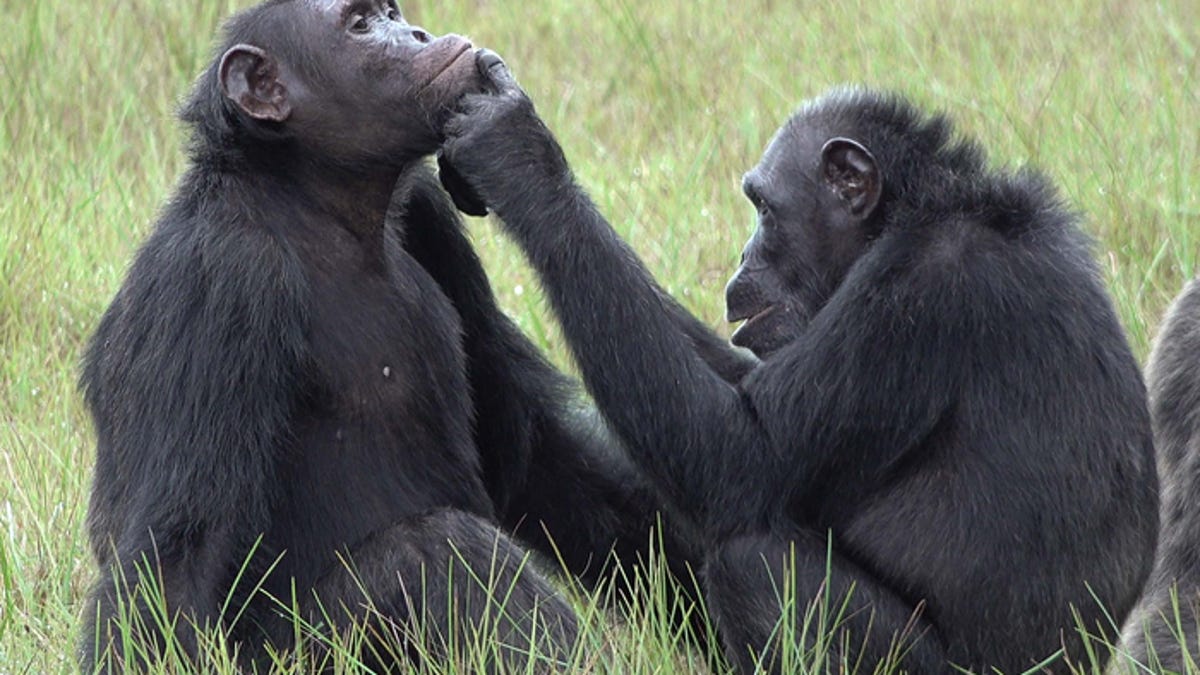Surprised scientists catch chimps using insects to treat each other's wounds
The primates appear to care for one another using creepy crawlies.

Roxy and Thea from the community of about 45 chimpanzees living in Loango national park in Gabon, Africa.
In 2019, Alessandra Mascaro, a volunteer at the Ozunga Chimpanzee Project in Africa's Loango National Park, watched intently as Suzee, an adult female chimp, gently nurtured her son, Sia. He'd injured his foot.
"Later that evening, I rewatched my videos and saw that Suzee had first reached out to catch something, which she put between her lips and then directly onto the open wound," Mascaro said in a statement. About a week later, Lara Southern, a Ph.D. student at the project, saw an adult male chimp, Freddy, behaving in a similar way.
Soon, Mascaro, Southern and fellow researchers realized what they'd witnessed. Suzee and Freddy had caught flying insects mid-air, softened them up in their mouths and applied the bugs to gashes. Over the next year, the team recorded 22 such events, and continued to do so for the following two.
"Our observations provide the first evidence that chimpanzees regularly capture insects and apply them onto open wounds. We now aim to investigate the potential beneficial consequences of such a surprising behavior," primatologist Tobias Deschner, project leader and author of a study on the discovery published Monday in the journal Current Biology, said in a statement.
While co-author and cognitive biologist Simone Pika says scientists have observed self-medication across animal species such as reptiles, birds and mammals, applying animalmatter on open wounds hasn't been documented before.
One explanation for the crittery pharmaceutical agent, the team says, is that parts of the bugs may have anti-inflammatory or antiseptic properties. Or, the practice could merely be part of local chimpanzee culture the way many human medical practices are. My mother, for instance, firmly believes a big cup of hot chocolate is vital when battling a cold.
But the most striking aspect of the chimpanzee medical procedure may be the fact that some of the documented instances involved a monkey treating the wounds of another. Southern recalls an adult female chimp, Carol, tending to Littlegrey, an adult male chimp, with a bug-based ointment.
"What struck me most was that she handed it to Littlegrey, he applied it to his wound and subsequently Carol and two other adult chimpanzees also touched the wound and moved the insect on it," Southern said. "The three unrelated chimpanzees seemed to perform these behaviors solely for the benefit of their group member."
Experts have long reported chimpanzees expressing affection for their peers, such as with doting mothers toward their children, but, Pike adds, "such examples of clear prosocial behaviors are rarely observed in nonhuman species. These observations may now also convince the skeptics."

